When it comes to coral reefs, there are many different types of corals to choose from. Two of the most popular types are LPS and SPS corals. LPS stands for “large polyp stony” while SPS stands for “small polyp stony.” These terms refer to the size of the polyps, that make up the coral colonies.
While both LPS and SPS corals are popular choices for reef aquariums, they have some key differences. LPS corals tend to have larger polyps and are generally considered to be easier to care for than SPS corals. SPS corals, on the other hand, have smaller polyps and are often more challenging to keep alive and healthy.
If you’re considering adding coral to your reef aquarium, it’s important to understand the differences between LPS and SPS corals. In this article, we’ll take a closer look at the characteristics of each type of coral, as well as the pros and cons of keeping them in your aquarium. Whether you’re a seasoned reef keeper or just starting out, this guide will help you make an informed decision about which type of coral is right for you.
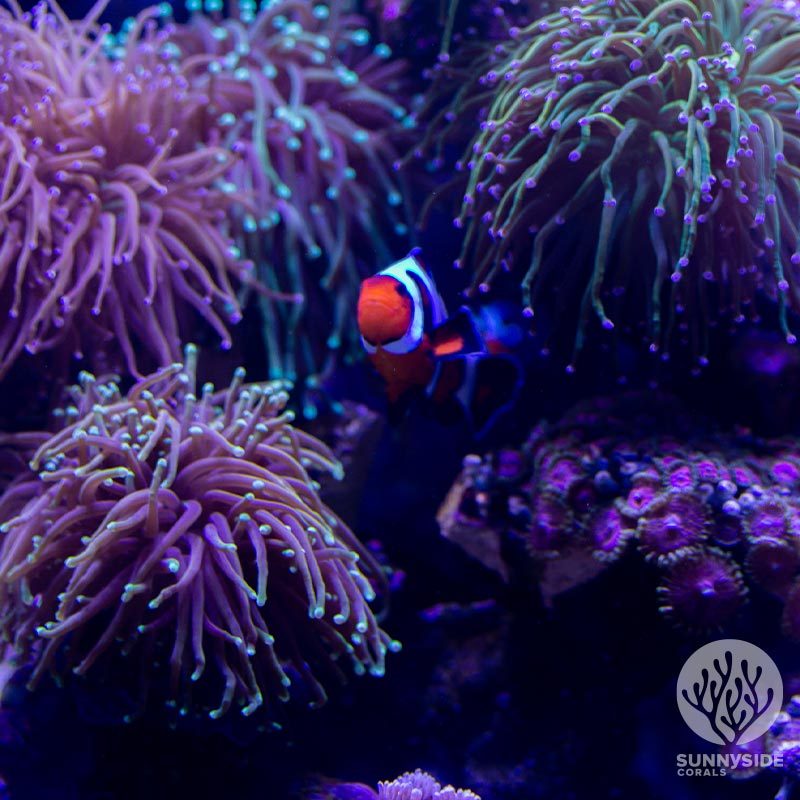
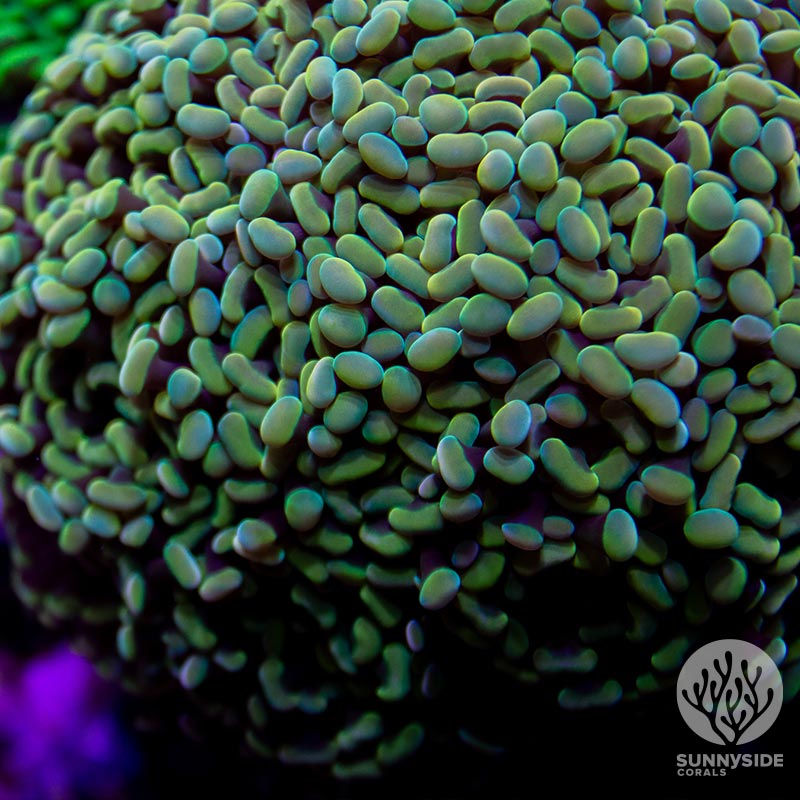
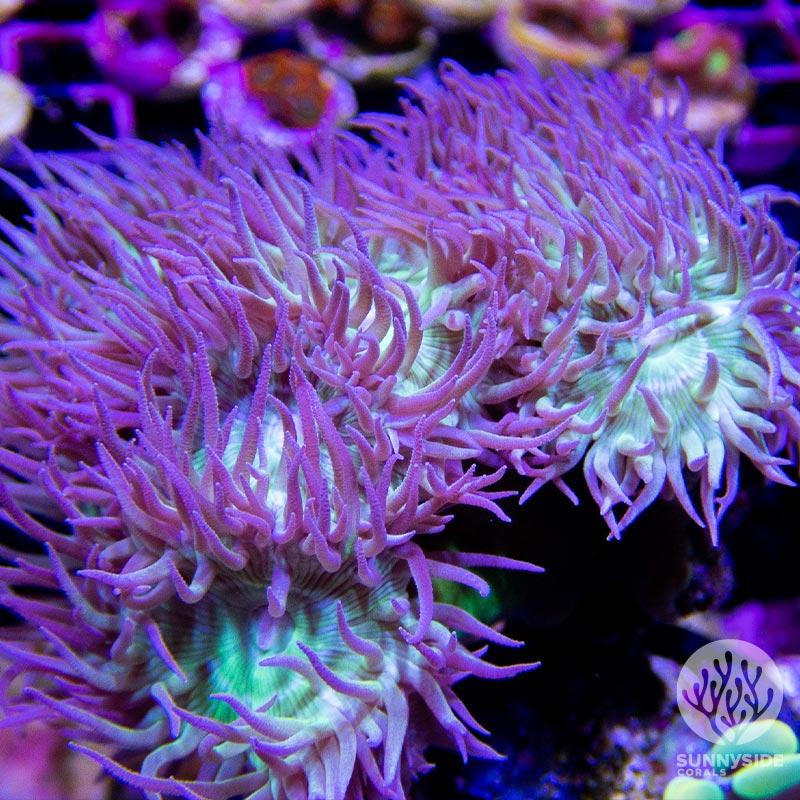
What are LPS Corals?
LPS stands for Large Polyp Stony corals. As the name suggests, these corals have larger polyps compared to SPS corals, which makes them easier to spot. Their polyps are typically between 1 and 2 inches in diameter, and they extend and retract from the coral’s skeleton. LPS corals are also known for their colorful appearance, flowy movement, and unique shapes, which make them popular among reef aquarists.
One of the most significant advantages of LPS corals is that they are generally easier to care for than SPS corals. They are more tolerant of fluctuations in water quality and temperature, making them ideal for beginner reef keepers. They also require less intense lighting and water flow than SPS corals, which makes them less demanding on equipment.
There are many different types of LPS corals, including hammer corals, torch corals, favias, and chalices. Each type has its unique requirements and characteristics, and it’s essential to research each species before adding it to your aquarium. For example, some LPS corals require regular feeding, while others can survive solely on photosynthesis.
What are SPS Corals?
SPS corals, or small polyp stony corals, are a type of coral that has small polyps with a diameter of less than 1cm. They are characterized by their intricate and delicate branching structures, encrusting, or plating growth patterns which are made up of calcium carbonate. SPS corals come in a wide range of colors, including blue, green, pink, and purple, and are a popular choice for reef aquariums.
SPS corals are considered to be more challenging to keep than LPS corals because they require very specific water conditions. They require high levels of calcium, magnesium, and alkalinity, and are sensitive to changes in water temperature and salinity. In addition, SPS corals require high levels of light, which often demands a nicer light set up such as radions and t5s for optimal growth.
Despite their high maintenance requirements, SPS corals are highly prized by reef aquarium enthusiasts for their beauty and unique growth patterns. They are known for their rapid growth and can quickly outgrow their space in an aquarium if not properly maintained. SPS corals are also known for their ability to create a natural habitat for other marine life, providing shelter and food for fish and invertebrates.
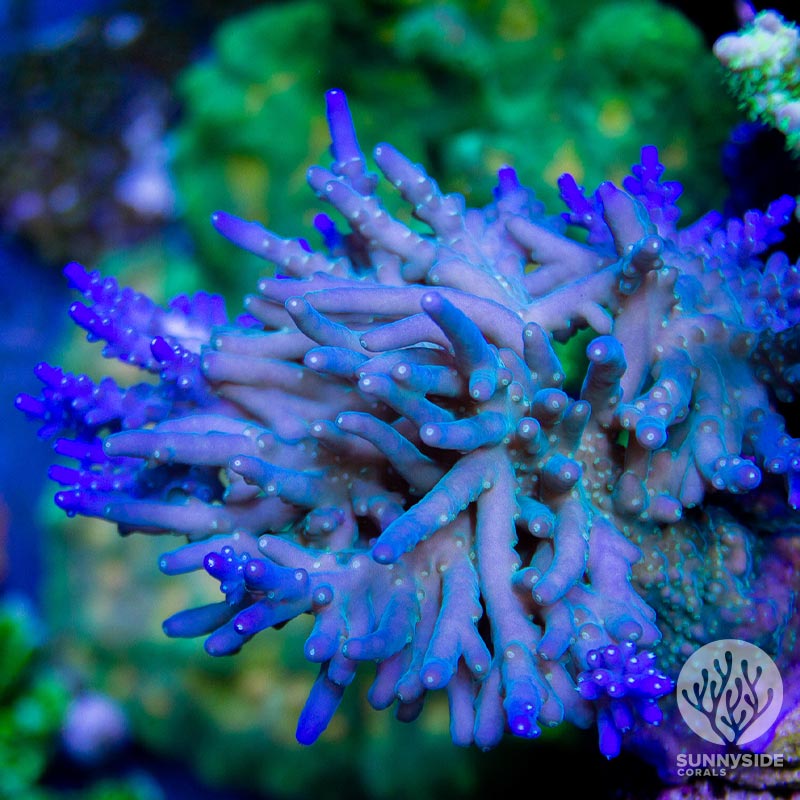
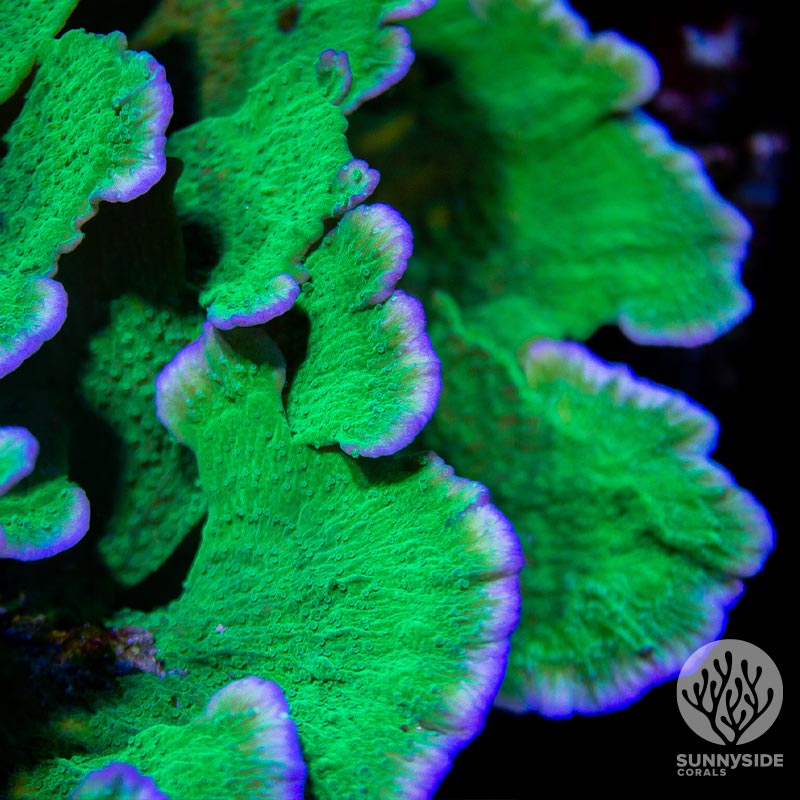
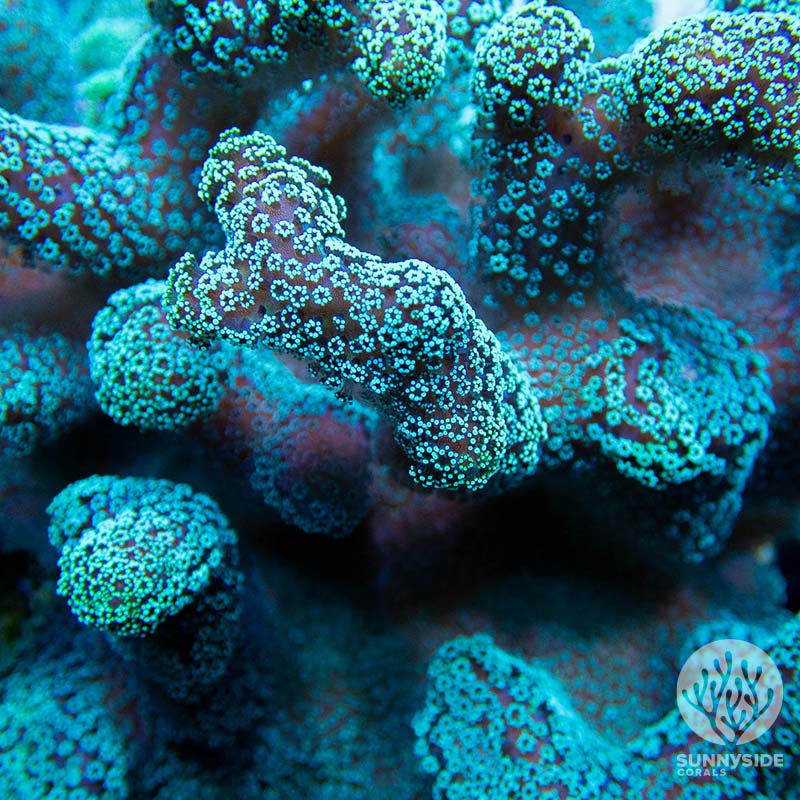
Differences Between LPS and SPS Corals
Skeleton Structure
The most significant difference between LPS and SPS corals is their skeleton structure. LPS corals have a thick, fleshy skeleton, while SPS corals have a thin, calcareous skeleton. LPS corals also have a more porous skeleton, which allows them to absorb nutrients from the water more easily. On the other hand, SPS corals have a more solid structure, which makes them more resistant to damage from predators and environmental factors.
Polyp Size and Shape
Another major difference between LPS and SPS corals is their polyp size and shape. LPS corals have larger, more prominent polyps, while SPS corals have smaller, more delicate polyps. LPS corals also have a more varied polyp shape, ranging from round to elongated, while SPS corals have a more uniform, flower-like shape.
Growth Rate
LPS corals generally grow at a slower rate than SPS corals. This is because LPS corals have a thicker skeleton and larger polyps, which require more energy to maintain. SPS corals, on the other hand, have a thinner skeleton and smaller polyps, which allows them to grow more quickly.
Lighting and Water Flow Requirements
SPS corals require strong lighting and high water flow to thrive, while LPS corals can tolerate a wider range of lighting and water flow conditions. SPS corals need intense lighting because they have a symbiotic relationship with photosynthetic algae, which provides them with energy. LPS corals, on the other hand, do not rely as heavily on photosynthesis and can get by with lower light levels.
Feeding and Care
LPS corals require more feeding and care than SPS corals. They need to be fed a variety of foods, including plankton, brine shrimp, and other small organisms. They also require regular water changes and maintenance to keep their fleshy polyps healthy. SPS corals, on the other hand, can get by with less feeding and care, as they rely more on photosynthesis for energy.
Popular LPS Corals
Large Polyp Stony (LPS) corals are a great choice for beginners or those who are looking for an easy-to-care-for coral. These corals are known for their large fleshy polyps that extend from a hard calcareous skeleton. Here are some of the most popular LPS corals:
- Torch Coral: This coral has long, flowing tentacles that resemble a torch. It comes in a variety of colors, including green, purple, and orange. The Torch Coral prefers low to moderate lighting and moderate water flow.
- Frogspawn Coral: The Frogspawn Coral has large, fleshy polyps that resemble a frog’s foot. It comes in a variety of colors, including green, pink, and orange. The Frogspawn Coral prefers moderate lighting and moderate water flow.
- Hammer Coral: The Hammer Coral has hammer-shaped tentacles that resemble a hammerhead shark. It comes in a variety of colors, including green, purple, and blue. The Hammer Coral prefers low to moderate lighting and moderate water flow.
These LPS corals are relatively easy to care for and can add a lot of color and movement to your reef tank. It’s important to provide them with the proper lighting and water flow to ensure their health and growth.
Popular SPS Corals
SPS corals are a popular choice for reef aquarium enthusiasts because of their unique shapes and colors. Here are some of the most popular SPS corals:
- Acropora – This is one of the most popular SPS corals. It comes in many different colors and shapes, and is known for its fast growth rate.
- Montipora – This SPS coral is also available in many different colors and shapes. Often it is hardier than Acropora but can grow just as fast or faster than Acropora.
When it comes to caring for SPS corals, it’s important to provide them with the right conditions. They require high water flow and intense lighting, so make sure your aquarium is equipped with the proper equipment. It’s also important to maintain stable water parameters, including temperature, salinity, and pH.
Overall, SPS corals can be a beautiful addition to any reef aquarium. Just be sure to research their care requirements before adding them to your tank.
Conclusion
Both LPS and SPS corals are stunning and can add beauty and diversity to any reef tank. However, they have different requirements and characteristics that make them unique.
If you are a beginner, LPS corals may be a better choice for you as they are generally easier to maintain and require less intense lighting and water flow. They also tend to be less expensive than SPS corals.
On the other hand, if you are an experienced aquarist and have the proper equipment and knowledge, SPS corals can be a rewarding challenge. They require more attention and care, but they offer a wide range of colors and shapes that can create a stunning reef display.
Ultimately, the decision between LPS and SPS corals comes down to your personal preferences, experience level, and the resources you have available. Regardless of which type of coral you choose, it’s important to research their specific requirements and provide them with the proper care to ensure their health and longevity in your tank.
FAQ Section
Are LPS or SPS corals easier?
It depends on the species and the conditions in your tank. Generally, LPS corals are considered easier to care for than SPS corals because they are less demanding in terms of lighting and water flow. However, some LPS corals can be sensitive to changes in water chemistry and may require more attention than others. SPS corals, on the other hand, require strong lighting and high water flow, which can be challenging to maintain. However, some SPS corals are more forgiving than others and can be suitable for beginners with some experience.
Are SPS corals for beginners?
SPS corals are generally not recommended for beginners because they require more specialized care than LPS or soft corals. They require strong lighting, high water flow, and stable water chemistry, which can be difficult to maintain for inexperienced hobbyists. However, some SPS corals are more forgiving than others and can be suitable for beginners with some experience. It is important to do your research and choose species that are known to be hardy and adaptable. We often recommend you do not add SPS to your tank for at least 6 months to a year as your tank needs time to stabilize before adding sps.
Can you mix LPS and SPS corals?
Yes, you can mix LPS and SPS corals in the same tank, but it requires careful planning and consideration of the requirements of each species. LPS corals typically require lower lighting and water flow than SPS corals, so you may need to create separate zones in your tank to accommodate both types of corals. It is also important to consider the compatibility of different species, as some corals may compete for space or resources by stinging one another.
